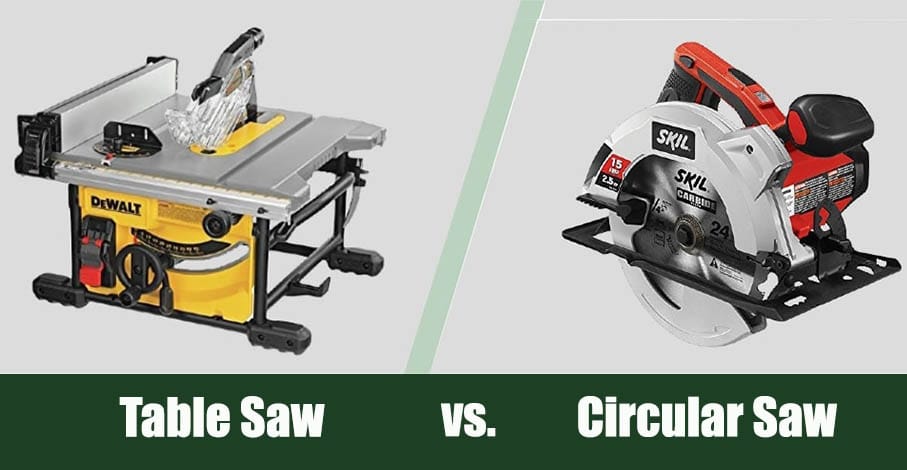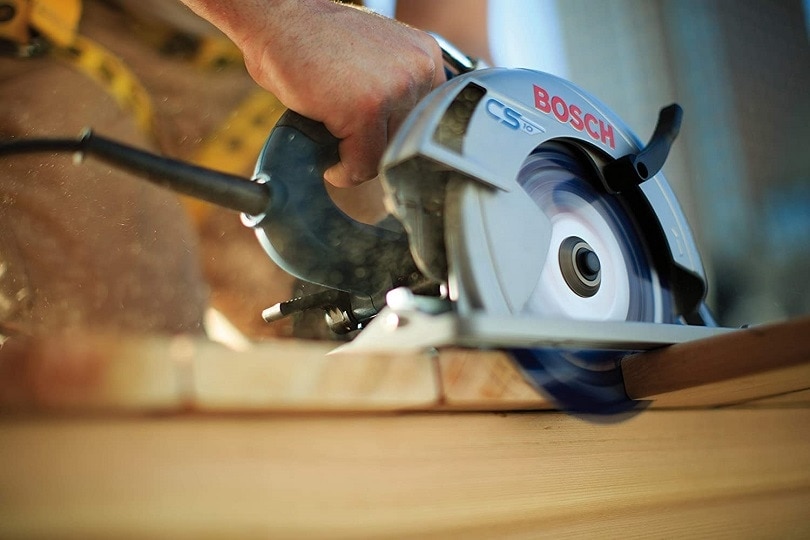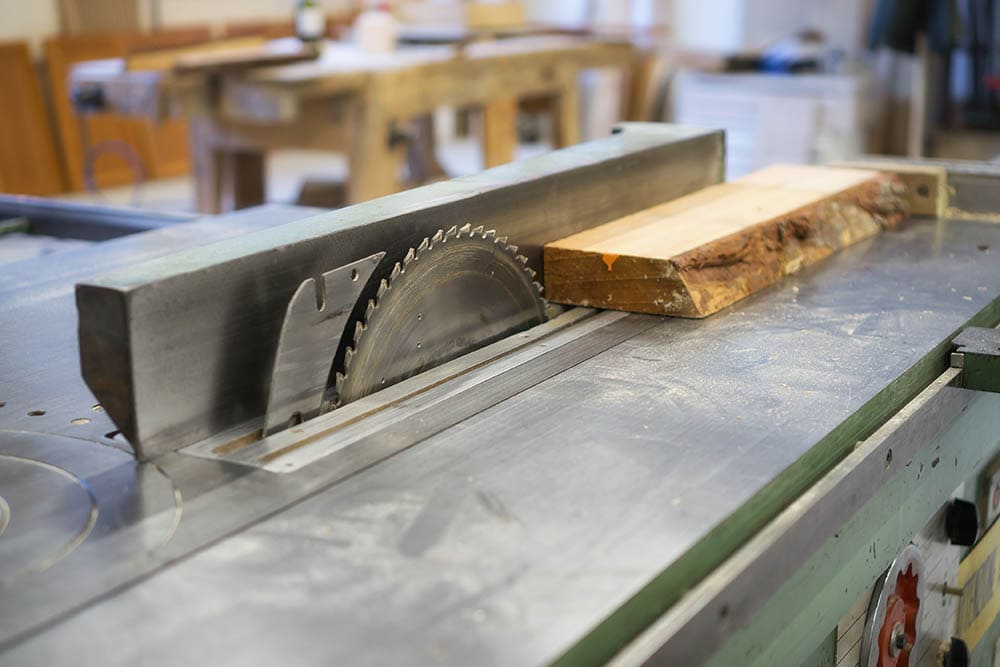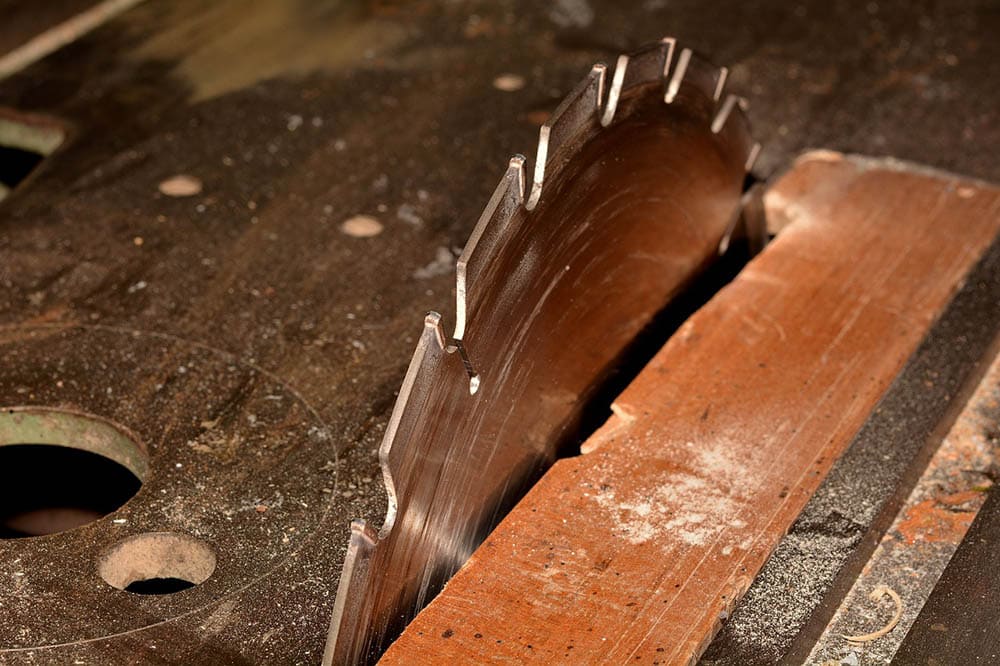Table Saw vs Circular Saw: Which One Should You Choose?
-
Ed Malaker
- Last updated:


In every workshop, the table saw and circular saw are popular tools, but it can be challenging to choose which to buy first if you are new to woodworking. If this sounds like your situation, keep reading while we take a closer look at these two saws to discuss how they work and see how useful they are. We’ll review the pros and cons of each and tell you about our experience with them to help you make an informed decision.

Overview of the Circular Saw

How It Works
The circular saw is a small handheld device, thank you either plug-in or used with rechargeable batteries. It uses a large steel blade, usually, 7¼ inches long, attached to a powerful Rotary motor. This motor spins the blade to provide the speed and torque required to cut the lumber or other material. You line it up with your guideline and squeeze the trigger to set the blade in motion. Guards are in place to protect your hands, and they usually have an automatic brake that stops the blade immediately when you let go of the trigger. Markings on the machine help guide you so you can follow pre-drawn lines.
What It’s Good for
The circular saw is one of the most useful tools in the workshop. It’s perfect for cutting small pieces of lumber like a 2×4 or plywood, and you can even cut larger boards once you have experience. Since it’s so lightweight and portable, we find we use it for almost all of our cutting jobs. Many circular saws will even cut the wood at an angle lengthwise, and they are much less expensive than a table saw.
The downside to the circular saw is that it’s not great at cutting large boards because you need to push the saw with your hand. Natural human error often results in slight deviances, and while some models offer guides, they are not as reliable as those on a table saw. Stretching your body to cut the large boards can also quickly result in fatigue and more deviances in a straight line.
- Extremely versatile
- Perfect for most DIY projects
- Inexpensive
- Difficult to cut long straight lines
- High fatigue
Related Read: 9 Different Types of Circular Saws & Their Uses (with Pictures)

Overview of the Table Saw

How It Works
While the table saw might look complex to someone inexperienced with woodworking, it’s nothing more than a circular saw built into a table. The table allows you to make tiny changes to the blade for highly accurate cuts. It also features an array of built-in rails that help guide your saw for perfectly straight lines across long distances.
What It’s Good for
The table size is perfect for cutting large boards because it allows you to make straight cuts over long distances. Since the blade and rails are highly adjustable, you can cut the wood at almost any angle consistently and accurately. Since you push the wood into the blade, it’s much more comfortable to use and is the perfect choice when you need to cut many boards at a time.
The downside to the table saw is that it’s usually quite expensive. It’s also large and heavy, so it’s not portable and you must bring all the wood to the machine. It’s also more difficult to clean since sawdust can get trapped in the table where you can’t reach it easily.
- Accurate cuts
- Able to cut large boards
- Expensive
- Not portable
- Difficult to clean
Related Read: 7 Different Types of Table Saws & Their Uses (with Pictures)
Saw Blades
The circular saw is a smaller blade than the table saw, but they are extremely similar. Both versions come in many varieties that are useful for cutting at different materials. You will also find that the shape and number of teeth can have a huge impact on the blade’s ability to cut through certain materials causing many shop owners to keep several blades on hand.

Battery Power Versus Electric
Unfortunately, you are unlikely to find many battery-powered table saws. However, recent advancements in lithium technology have allowed many companies to design powerful rechargeable tools, including rechargeable circular saws that work almost as well as their electric counterparts. Battery-powered circular saws can be a wonderful addition to your workshop and will increase the portability of your tools. However, they are much more expensive than electric models, and the battery alone can cost upwards of $100.
- Cutting small boards
- When you don’t need to be extremely precise
- When you need a portable saw
- Cutting large boards
- When you need to be extremely precise
- When you cut a large amount of lumber every day
- Related Read: Jigsaw vs Circular Saw: Which is Right for Your Needs?

Conclusion
We recommend a circular saw for most people, especially inexperienced users because they are extremely versatile, easy to use, inexpensive, and portable. It’s tough to beat these handy tools for fixing broken window frames, door frames, and other odd jobs around the house. Most projects only require a small cut which is what the circular sound does best. The table saw is best suited for professional woodworkers who tend to cut more wood and tackle larger projects.
Contents
